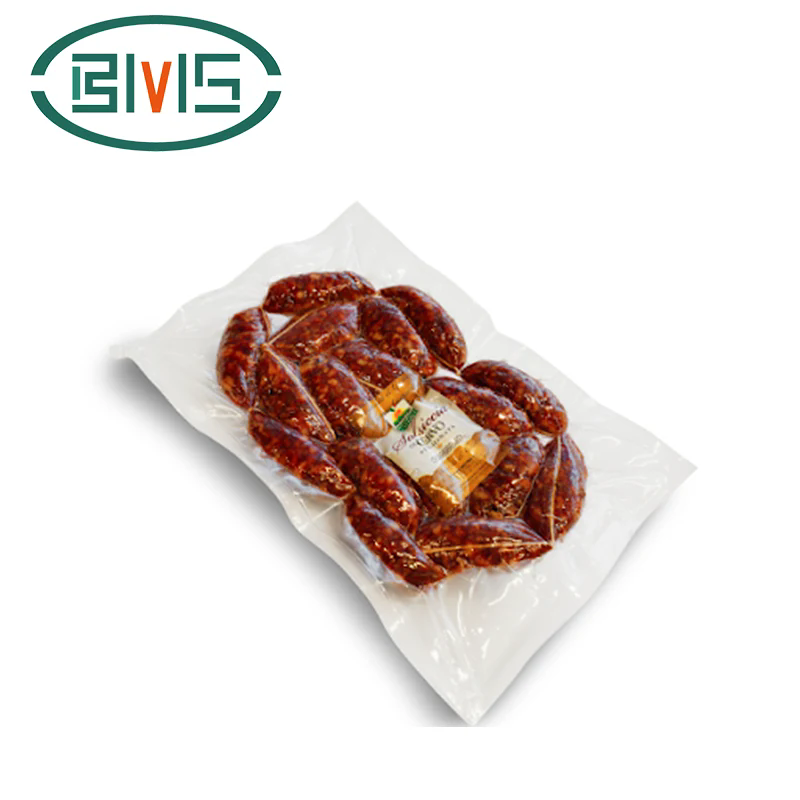How Does Thermoforming Film Revolutionize Packaging and Manufacturing Processes Across Industries?
2025-02-24
In the rapidly evolving world of manufacturing and packaging, thermoforming film has emerged as a transformative material. But what exactly makes thermoforming film so important, and how has it revolutionized industries ranging from food packaging to medical devices? In this blog, we will explore the incredible versatility of thermoforming films and how they are reshaping the way products are packaged, protected, and presented.
What Is Thermoforming Film?
Thermoforming film is a type of plastic film that is specifically designed to be heated, molded, and shaped into various forms or products. Typically made from materials such as PVC, PET, or polystyrene, thermoforming films are incredibly adaptable, allowing manufacturers to create a wide range of product shapes and designs. This process involves heating the film until it becomes soft and pliable, at which point it can be formed into a mold or vacuum-sealed around a product.
Thermoforming films are commonly used in the production of blister packs, trays, clamshell packaging, and protective covers, among many other applications.
How Does the Thermoforming Process Work?
The thermoforming process begins by heating a plastic film until it reaches a temperature where it becomes flexible and moldable. Once the material reaches the desired softness, it is placed over or inside a mold, where it is either vacuum-formed or pressure-formed to take the shape of the mold. After it cools and hardens, the result is a sturdy, custom-shaped product or package ready for use.
This process allows for a high degree of precision and detail, ensuring that the final product meets both functional and aesthetic requirements. The films can be used for single-use products, protective packaging, or reusable containers, offering a wide range of customization options.
Why Is Thermoforming Film So Popular?
1. Cost-Effective Production
One of the major advantages of thermoforming films is their cost-effectiveness. Compared to other manufacturing techniques, thermoforming is relatively simple and inexpensive. The film itself is typically affordable, and the process requires minimal tooling and labor, making it a viable option for both large-scale and small-scale production runs. This is why thermoforming films are often used in mass production, particularly for consumer goods and packaging.
2. Versatility in Applications
Thermoforming films offer a high level of flexibility when it comes to design and functionality. These films can be molded into intricate shapes, allowing manufacturers to create custom packaging that perfectly fits their products. The films are used extensively in industries such as:
- Food and Beverage Packaging: Thermoformed trays, containers, and clamshells are widely used to protect and display products like fresh produce, meats, and snacks. These packaging solutions help extend the shelf life of perishable goods while providing an attractive presentation.
- Medical and Pharmaceutical: In the medical field, thermoforming films are used for blister packaging, which helps protect pills and medical devices from contamination and damage. The ability to create sterile and tamper-evident packaging is essential in this industry.
- Consumer Electronics: Protective packaging for electronics like smartphones, tablets, and cameras is often made from thermoformed films. The material provides excellent shock absorption and protection from damage during shipping.
- Industrial Applications: Thermoformed films are also used for protective covers, trays, and custom-designed parts in industrial applications, offering durable, cost-effective solutions.
3. Customization and Branding Opportunities
Thermoforming films can be printed with logos, product information, and attractive designs, making them a great option for branding. Whether it’s a transparent clamshell with a brand’s logo prominently displayed or a custom-shaped tray that enhances the product’s visual appeal, thermoformed packaging can significantly impact consumer perception.
This customization makes thermoforming films an excellent choice for companies looking to enhance their packaging’s visual appeal while ensuring product safety.
4. Sustainability Benefits
As consumers and businesses become more conscious of environmental impacts, the demand for sustainable packaging options has increased. Thermoforming films can be made from recyclable plastics, and the process itself tends to generate less waste compared to other manufacturing methods. Additionally, thermoformed packaging is often lightweight, which can reduce transportation costs and lower carbon emissions associated with shipping.
Many manufacturers are also exploring ways to use biodegradable materials in the thermoforming process, which would further increase the sustainability of the product.
5. Durability and Protection
Thermoforming films are highly durable and offer excellent protection for the products they encase. Their strength helps protect items from physical damage, moisture, dirt, and other environmental factors. This makes them an ideal choice for products that need to be kept safe during transit or storage.
The films are also resistant to tearing, puncturing, and cracking, which ensures that the packaging maintains its integrity throughout the supply chain.
Different Types of Thermoforming Films
Several types of materials are used in thermoforming films, each offering specific benefits for different applications. Some of the most common types include:
- PVC (Polyvinyl Chloride): Known for its rigidity and clarity, PVC is widely used in packaging applications, especially for products that require transparency, such as food containers and retail packaging.
- PET (Polyethylene Terephthalate): PET thermoforming films are strong, lightweight, and provide excellent barrier properties, making them ideal for packaging beverages, food products, and medical items.
- Polystyrene: This material is cost-effective and easy to mold, making it popular for creating trays, clamshells, and other packaging items. It is often used in the foodservice industry.
- Polypropylene (PP): Known for its flexibility and strength, PP films are often used in packaging that requires high-impact resistance and durability.
Conclusion
In conclusion, thermoforming films are revolutionizing the packaging and manufacturing industries with their incredible versatility, cost-effectiveness, and ability to protect and showcase products in a wide range of applications. From food packaging to medical devices and consumer electronics, the role of thermoforming films continues to expand as businesses look for sustainable, functional, and visually appealing solutions. Whether you are looking to enhance your packaging, improve product protection, or create custom designs, thermoforming films offer a reliable and innovative solution that meets the demands of modern industries.



